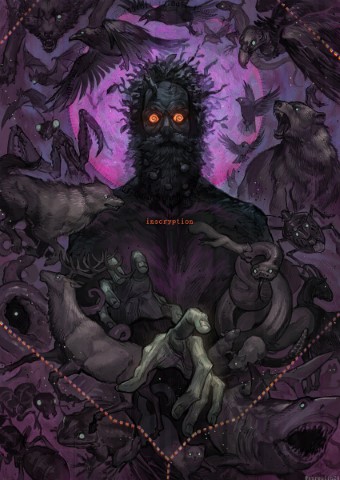SSH 常用场景和操作
主要介绍ssh服务在以下的几个方面(windows,linux)的使用情况:远程服务器连接(22),git&github(gitee),vscode免密登录。
ssh-key
GITHUB关于SSH的教程 👈可以直接切换成中文模式的
查看是否已存在
1 | |
初始化 / 生成 ssh key
1 | |
将ssh添加到github的个人权限界面中
免密登录
在github的教程中也有另一种方式来实现免密登录,好像是ssh-agent的方式安全的保存密码。
Related Word of Emotion
疑似
M. Suwa, N. Sugie and K. Fujimora, “A Preliminary Note on Pattern Recognition of Human Emotional Expression”, Proc. Int’l Joint Conf. Pattern Recognition, pp. 408-410, 1978.
K. Scherer and P. Ekman, Handbook of Methods in Nonverbal Behavior Research., 1982.
J.M. Carroll and J. Russell, “Facial Expression in Hollywood’s Portrayal of Emotion”, J. Personality and Social Psychology, vol. 72, pp. 164-176, 1997.
Standardization and Assessment of College Students’ Facial Expression of Emotion.
好像是评估表情标注的,
Universals and cultural differences in the judgments of facial expressions of emotion
不同文化下的表情对应情感的认知Classifying Emotion based on Facial Expression Analysis using Gabor Filter: A Basis for Adaptive Effective Teaching Strategy
确信
Facial Expression Analysis
这篇的introduction里面有好几篇Ekman P. Facial expression and emotion[J]. American psychologist, 1993, 48(4): 384.
Keltner D, Ekman P, Gonzaga G C, et al. Facial expression of emotion[J]. 2003.
上面这两篇的引用里应该能找到特别多
Xu R, Chen J, Han J, et al. Towards emotion-sensitive learning cognitive state analysis of big data in education: deep learning-based facial expression analysis using ordinal information[J]. Computing, 2019: 1-16.
GANs 01
fGAN 对GAN理论的深度理解
@Aiken 2021 onenote部分的拓展编写,到时候拷过去,整合在一起。
fGAN: 不只是JS-Div散度,我们可以将所有的散度都应用到GANs的框架中。该部分的阅读是对GAN的基本理论最重要的文章之一。
基本理论体系和推演
首先给出fGAN中提出的基本理论:可以将所有的Div放入GANs的框架中,来做那个核心的关键演化判别指标:
上述公式将衡量P和Q两个分布之间的差距,公式中的$f$可以是很多不同的版本,但是要求满足如下的两个条件:
- 是一个凸函数;$f(\frac{(x1+x2)}{2})\leq \frac{[f(x1)+f(x2)]}{2}$,需要注意国内外的凹凸相反
- $f(1)=0$。
而我们知道$q(x)$是概率密度分布函数,实际上可以看成凸函数性质的推广,所以我们可以证得:
显然当我们取得合适的f,KL($f(x) = xlog(x)$); ReverseKL($-log(x)$);chi square ($f(x) = (x-1)^2$);
Fenchel Conjugate共轭
补充Fenchel共轭的知识来对后续的fGAN推导进行补充,定理内容如下:
Markdown Handbook
参考资料:
一些关于markdown语法的参考资料,但是实际上如果用Typora的话,有很多的语法是不需要记忆的,只需要稍微了解就可以了,更需要学习的其实是Latex的公式编写。
- 基本语法:https://www.jianshu.com/p/191d1e21f7ed
- 进阶语法:https://blog.csdn.net/m0_37925202/article/details/80461714
- 其他语法:https://blog.csdn.net/cuishizun/article/details/80311673
目录:
Editor:
- Obsidian、Nvim、Typora:Notes的主力编写工具
- VsCode:Readme文档
- Jupyter:代码笔记编写的时候
Some daily usage:
| 操作名称 | Typora | VsCode |
|---|---|---|
| 跳转 | [button] (#name)-># | [button] (#name)-> \ |
| 复选框 | - [ ] | - [ ] |
Hyper-Resolution
说明:重点针对超分辨率技术
备注:
超分辨率在人脸识别上的多,但是表情识别上的确实不多,不过很多都会引用一波
超分辨率在表情识别中的应用
1 | |
< Robust Emotion Recognition from Low Quality and Low Bit Rate Video: A Deep Learning Approach >
- 针对于低带宽传输的分辨率不足和比率低的应用场景
- 基于facial expression recognition 的 emotion recognition
- 在解码器进行视频下采样的时候,联合SR和识别
< Effective image super resolution via hierarchical convolutional neural network >
- 通过层次卷积神经网络(HCNN)来实现有校的SR
- 在facial expression recognition 中案例研究发现增强后的图像有助于提高识别性能
< Spatio-temporal Pain Recognition in CNN-Based Super-Resolved Facial Images >
- 有点擦边吧,就是基于超分辨率算法的多分辨率图像,对面部进行识别从而判断疼痛程度
- 也可能妹啥用,你可以考虑一下
< Low-resolution facial expression recognition: A filter learning perspective >
- 摘要中没有明确的提到Super-Resolution,
- 但是感觉低分辨率这个问题前缀,可能和SR有关系来着
< PKU_ICST at TRECVID 2019: Instance Search Task >
- 好像是什么比赛,过程中有一部分是面部表情检测
- 在识别之前采取了超分辨率的查询增强
< Facial Expression Restoration Based on Improved Graph Convolutional Networks >
- 针对分辨率低和部分遮挡的面部表情识别
- GAN IGCN RRMB 修复和超分辨率面部表情
Image Caption Dataset
Goals:
1.数据量要求
2.标注的标准
3.标注的手段
Microsoft COCO Captions:
使用Amazon的Mechanical Turk(AMT)收集数据,再对数据进行标注。
“Each of our captions are also generated using human subjects on AMT.”
一些其他信息:(Caption Evaluation Server):
好像是可以评价caption的生成质量,但是应该是仅仅针对于使用COCO数据进行的,所以这一部分就不分析了。
文中(section 3)包含了几种不同评价方法的介绍:
BLEU
ROUGE
METEOR
CIDEr
在进行Evaluation之前的 Tokenization and preprocessing中:
使用了工具来添加caption标记:
- Stanford PTBTokenizer in Stanford CoreNLP tools (version 3.4.1)
这个工具是模仿的是peen treebank3. 其参考文献和相关链接如下:
“The Stanford CoreNLP natural language processing toolkit,” in Proceedings of 52nd Annual Meeting of the Association for Computational Linguistics: System Demonstrations, 2014, pp. 55–60. related-link
数据规模:
表情数据集
根据这次需要搜集的表情的数据集,整理一下搜索数据集的网站和思路等
PART1 “表情数据集”
下列是对数据搜集的要求:
- 是否开源
- 图片的大小和数量
- 图片的采集方式
eg:ck+
==数据来源及对应的搜索结果如下:==
好像是一个什么挑战赛的数据集要博士后或者相应教员才能申请使用申请页面
没有具体的用于表情识别的数据子集的信息(好像数据很多,但是不知道在哪下,除了那个博士后申请的)
real-world Affective Face
数据量29672个图像,7种基本情绪,12种复合情绪,(包含种族年龄范围性别属性,5个准确定位和37个自动生成的定位)
数据收集方式:来源网络,大小应该很杂 (由40个人独立标定)








